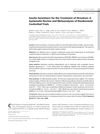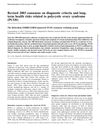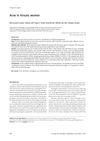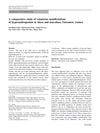Hyperandrogenism: Acne and Hirsutism
January 2016
in “
Springer eBooks
”
hyperandrogenism hirsutism acne polycystic ovarian syndrome PCOS idiopathic hirsutism congenital adrenal hyperplasia CAH Cushing’s disease weight reduction hair removal oral contraceptive pills antiandrogen medications spironolactone finasteride cyproterone acetate flutamide eflornithine topical retinoids topical antimicrobials benzoyl peroxide topical antibiotics erythromycin clindamycin sulfacetamide dapsone oral isotretinoin birth control pills Propecia Vaniqa Retin-A Accutane
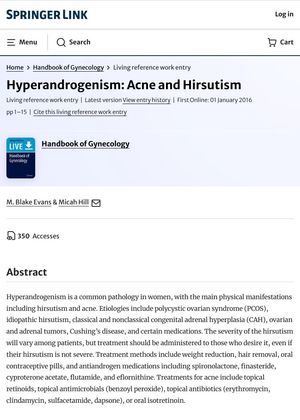
TLDR Hyperandrogenism, often causing excessive hair growth and acne, can be treated with methods like weight reduction, hair removal, various medications, and in the case of acne, topical treatments.
The document from 2015 discussed hyperandrogenism, a common condition in women that often results in hirsutism (excessive hair growth) and acne. The causes of hyperandrogenism can include polycystic ovarian syndrome (PCOS), idiopathic hirsutism, congenital adrenal hyperplasia (CAH), ovarian and adrenal tumors, Cushing’s disease, and certain medications. The severity of hirsutism varies among patients, but treatment should be offered to those who desire it, regardless of severity. Treatment methods can include weight reduction, hair removal, oral contraceptive pills, and antiandrogen medications such as spironolactone, finasteride, cyproterone acetate, flutamide, and eflornithine. Acne treatments can include topical retinoids, topical antimicrobials like benzoyl peroxide, topical antibiotics like erythromycin, clindamycin, sulfacetamide, dapsone, or oral isotretinoin.

